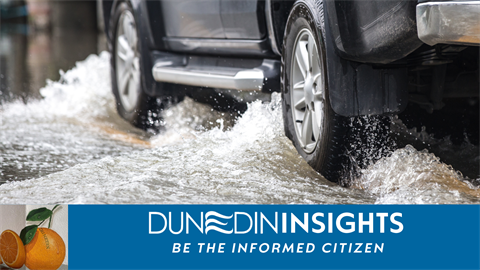Hidden Hazard: Driving Through Standing Water
Published on July 31, 2025

Do you really know how deep standing water is? According to the National Weather Service, it only takes 12 inches to float a vehicle. Driving through standing water can be costly and dangerous. Very shallow water can hide hazards from view. It only takes a few inches of water to hide open manhole covers, deep potholes and washed-away pavement.
Cars and SUVs
They should not be driven through standing water that will reach the hubcap or wheel. If you can’t clearly see the road beneath, the conditions are unsafe. Even shallow-looking water can become a costly mistake. If no alternate route is available and the water is visibly shallow, well below the wheel rim, you may proceed with extreme caution at less than 5 mph. Once clear, gently test your brakes to ensure they are functioning properly.
When in doubt, don’t risk it.
Heavy duty trucks
While larger and higher off the ground, heavy-duty trucks are still vulnerable when it comes to standing water. Do not attempt to drive through water that reaches the center of the wheel hub or higher. If an alternate route is not an option and the water is clearly below that level, proceed very slowly, under 5 mph, and check your brakes once through.
Still, the safest action is the simplest: Avoid it altogether.
Electric Vehicles
Electric vehicles should never be driven in standing or rushing water. The salt within the battery or battery components can form conductive bridges that lead to short circuits or self-heating of the battery, resulting in fires. In the event of flooding, EVs can become incredibly dangerous, they store a lot of electricity and can catch fire or cause electrocution. An EV that has been submerged is incredibly dangerous. Do not attempt to drive it or connect it to a charging cable.
NEVER Drive Through Moving or Rushing Water
Driving through moving water is dangerous. Vehicles can be swept off the road by fast moving water even if the water is shallow. This often results in a fatality. Find an alternate route. Remember: Turn around, don't drown.